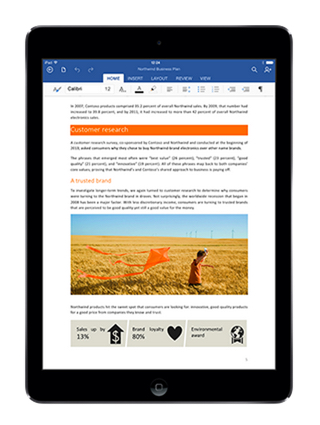The potential cost of frequent iOS app updates


Mobile device owners aren’t shy about getting apps, a lot of them. This includes apps used for work, especially office suites.
Those using iPads and iPhones for work tasks most likely have Apple’s iWork suite, or Microsoft’s Office for iPad. Since all six of the apps that make up these two office suites are free (iWork with device purchase), odds are many iOS device owners have them all installed.
These apps are all very good for working with typical office documents, and to keep them in top form it’s a good idea to apply updates when they're released. Updates are being released regularly, especially for the Office for iPad suite as Microsoft is making a solid effort to keep things improving quickly.
Frequent updates are a good thing for users as they quash inevitable bugs and add new features. Even so, these regular updates are not without a downside that device owners need to be aware of.
Not that long ago, mobile apps were tiny programs that didn’t take much space on devices. That’s changed over time, as device storage and installed memory capacity has increased to rival that of desktop computers.
We demand more of our apps and they’ve grown substantially in size as a result. Now, even "small" apps can be 20MB or larger. That’s not bad, but Office for iPad apps and iWork apps are much bigger. All six of these apps, Pages, Numbers, Keynote, Excel, Word, and Powerpoint, are approaching, or are over, 400MB each.
Those having both suites installed may have noticed they collectively take over 2.5GB of space on the device. That’s a lot, but it’s worth it given the utility they provide.
What mobile device users need to be aware of is that this big app size has an ongoing impact. Every time one of these apps is updated, the compressed app is downloaded. Both Apple and Microsoft tend to update all three apps in the suite at the same time, so this is usually around 700MB each suite update.
When each company updates its suite around the same time, around 1.5GB will be pushed to the iPhone or iPad in a short period. This isn’t bad on Wi-Fi, but if the iOS setting to let updates download on cellular data is turned on, it can impact the monthly data consumption. Users need to be aware of this impact and decide if using cellular data is worth it.
Games can be very large and really hit the data consumption hard when updates are pushed to the device. Of course, iPhones and iPads deployed by the enterprise should prohibit the installation of non-work apps. Those using their own devices in BYOD settings may install games, so companies paying for the data plan should think about that.
One of the biggest iOS apps is iMovie for iOS. It’s over 600MB so updates can really hit the monthly data hard. Fortunately, Apple doesn’t tend to update iMovie that often.
GarageBand by Apple is another giant app at over 500MB. It's rarely updated but can make a big hit on data consumption when it is.
Having mobile apps with lots of features is good for those using iPhones and iPads for work, but it’s not without impact on the data cap. Be aware that many of these apps are being updated with greater frequency than in the past, and it may be a good idea to turn off the use of cellular data for the updates.
Some developers of iOS apps are in the habit of pushing frequent updates to users (I'm looking at you, Evernote), and that can add up over cellular data. It might better serve customers to roll small changes up into bigger updates and release fewer of them. Your users may thank you for the consideration.